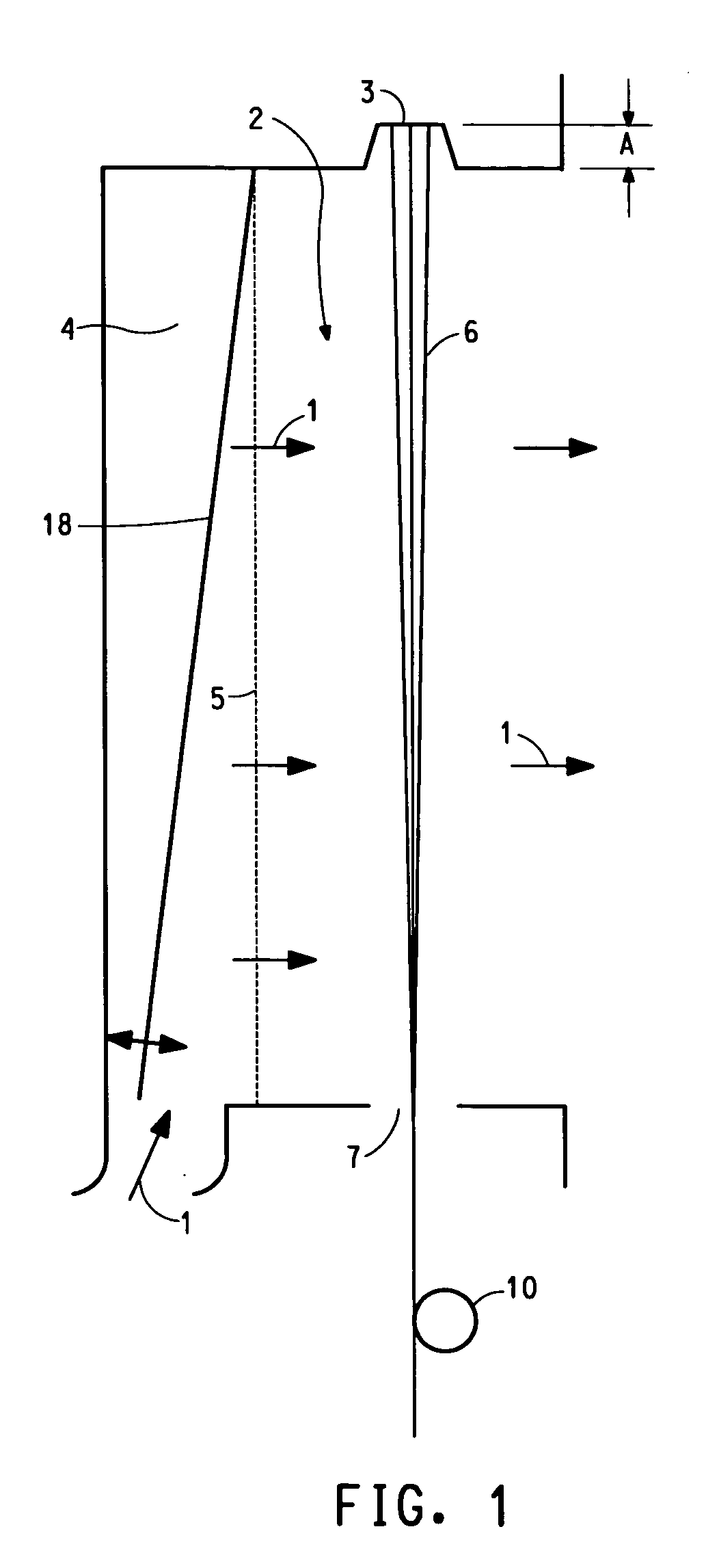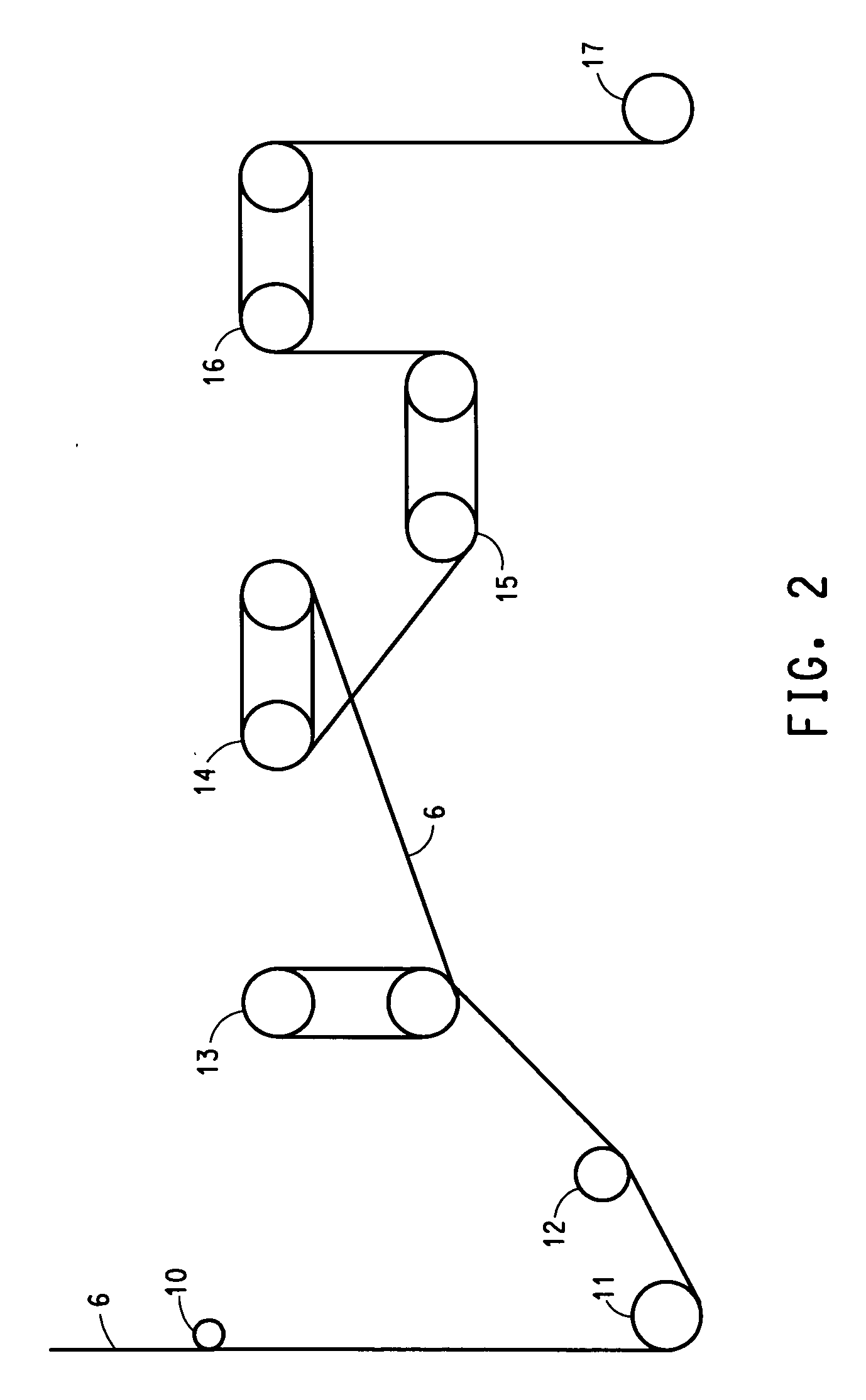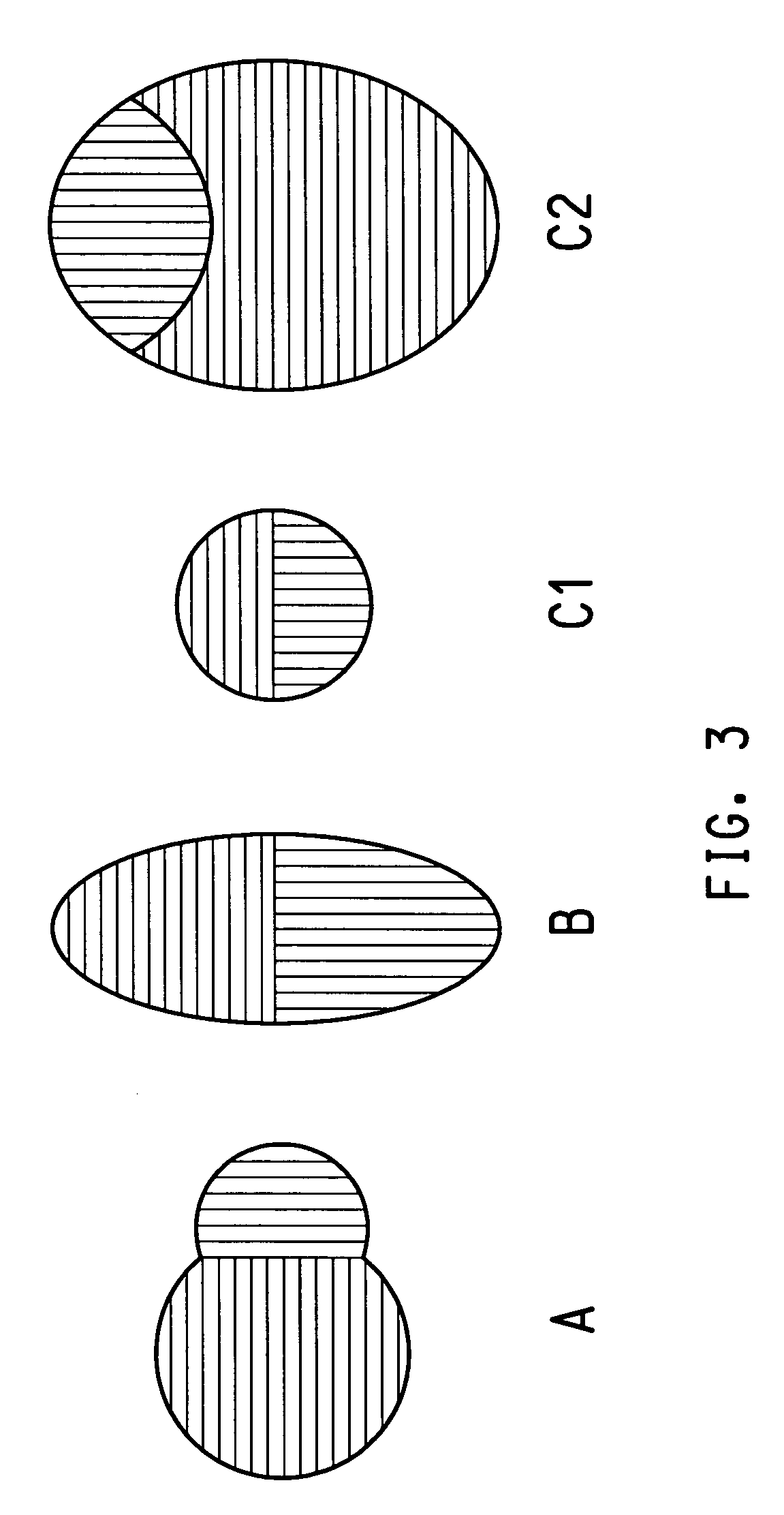3gt/4gt biocomponent fiber and preparation thereof
a biocomponent fiber and biocomponent technology, applied in the field of bicomponent fibers, can solve the problems of high-pressure dyeing of fabrics, inability to suppress molecular orientation using low-softening point polymers such as polystyrene, and inability to achieve uniform color, blend irregularities, and yarn breakag
- Summary
- Abstract
- Description
- Claims
- Application Information
AI Technical Summary
Benefits of technology
Problems solved by technology
Method used
Image
Examples
example
[0068] The present invention is further defined in the following Example. It should be understood that this Example, while indicating preferred embodiments of the invention, are given by way of illustration only. From the above discussion and this Example, one skilled in the art can ascertain the preferred features of this invention, and without departing from the spirit and scope thereof, can make various changes and modifications of the invention to adapt it to various uses and conditions.
[0069] The meaning of abbreviations is as follows: “h” means hour(s), “min” means minute(s), “mm” means millimeter(s), “cm” means centimeter(s), “g” means gram(s), “mg” means milligram(s), “kg” means kilograms, “dtex” means decitex, “wt %” means weight percent(age), “mpm” means meters per minute, “gpd” means grams per denier, “dN” means deciNewton(s), “den” means count denier, “dl” means deciliter(s), “2GT” means poly(ethylene terephthalate), “3GT” means poly(trimethylene terephthalate), “4GT” m...
PUM
| Property | Measurement | Unit |
|---|---|---|
| Fraction | aaaaa | aaaaa |
| Mass flow rate | aaaaa | aaaaa |
| Specific volume | aaaaa | aaaaa |
Abstract
Description
Claims
Application Information
 Login to View More
Login to View More - R&D
- Intellectual Property
- Life Sciences
- Materials
- Tech Scout
- Unparalleled Data Quality
- Higher Quality Content
- 60% Fewer Hallucinations
Browse by: Latest US Patents, China's latest patents, Technical Efficacy Thesaurus, Application Domain, Technology Topic, Popular Technical Reports.
© 2025 PatSnap. All rights reserved.Legal|Privacy policy|Modern Slavery Act Transparency Statement|Sitemap|About US| Contact US: help@patsnap.com



